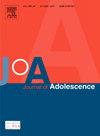Examining the Methods Adolescents Use in Nonsuicidal Self-Injury: A Multi-Wave Latent Profile Analysis
Abstract
Introduction
Nonsuicidal self-injury (NSSI) among adolescents is a health concern. Little is known about the patterns of methods adolescents use, in terms of how many and how often different methods are used.
Methods
We used three annual waves of data from 630 Swedish adolescents (T1: age 12–18 years; 56% girls), who reported NSSI use at least once. Latent profile analysis was used to examine profile differences, with supplementary analyses focused on differences and change predicted by gender, internalizing, emotion dysregulation, interpersonal stressors, and severity of NSSI.
Results
Three profiles consistently emerged over time: one very low in NSSI, another with higher frequencies of cutting/scraping skin, and one reporting multiple methods of NSSI, ranging from moderate (T1) to high (T3) frequency. Profile subgroups differed: low subgroups consisted of the fewest girls and reported the lowest levels of intra- and interpersonal issues. Additionally, subgroups differed in severity of NSSI, suggesting damage to the skin may not be the only reason medical attention is needed. Significant change in subgroup membership was also observed.
Conclusions
Although most adolescents engaged in NSSI at very low rates, many used multiple forms, differing in both frequency and versatility. Few differences were found between subgroups characterized by higher frequencies, suggesting that it might be possible to identify adolescents most in need of treatment by attending to the methods most frequently used. Results also suggested that measuring the severity of each method may yield more accurate information than a priori groupings.


 求助内容:
求助内容: 应助结果提醒方式:
应助结果提醒方式:


